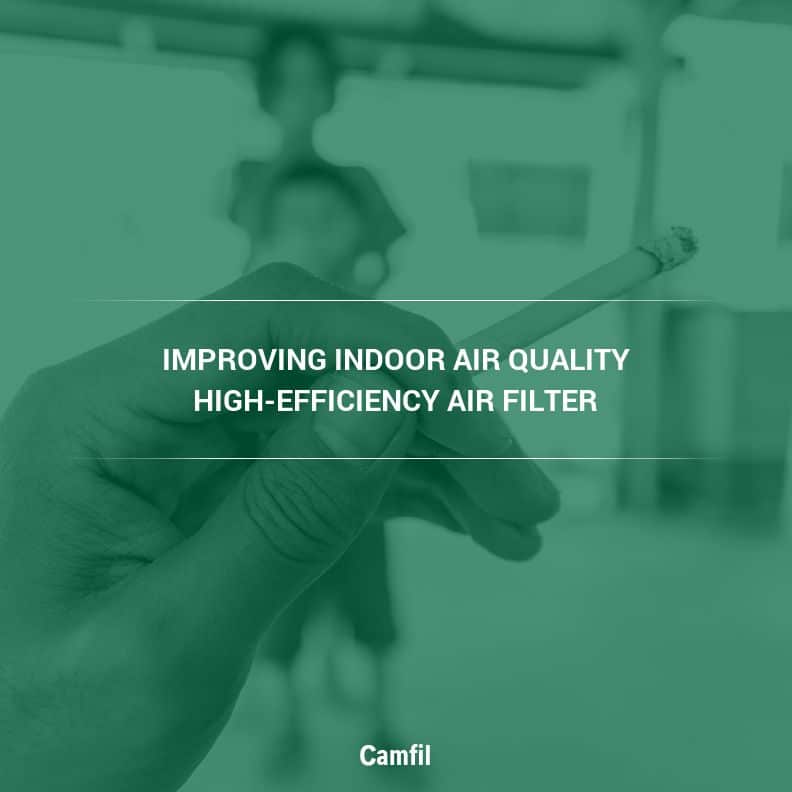Customer health is an indoor air quality priority
In recent years, the conversation about indoor air quality (IAQ) has been focused largely on the harmful health impacts of airborne pollution. But according to some air quality experts, the conversation about IAQ technology is a timelier one to have.
“Over the last quarter-century as lifestyle choices put people inside for longer portions of the day, lung and respiratory problems seem to occur more frequently,” says Mark Davidson, Marketing Manager and Technical Materials at Camfil USA. Clearly, we need to reconsider the ways we are filtering our indoor air, and fast.”
Setting aside the immediate challenges the COVID-19 pandemic brings, designers and contractors have begun to embrace the proliferation of IAQ technology., Industrial, commercial, and residential customers the world over have begun to see significant improvements in air quality that, if maintained, could represent promising changes for our environments, both inside and out.
The Role of IAQ Technology in Improving Human Health
From free-standing air cleaners to high-efficiency filters, there are numerous ways to tackle air filtration in commercial and retail settings. Some solutions might require investment, as is the case with new buildings, renovations, and other major changes to a facility’s infrastructure.
On the other hand, IAQ technology like portable air filters and free-standing molecular air cleaners can be installed for a small fraction of the price of a new system and can have a significant effect on odors, VOCs , particulates, and anything else floating in the air that might threaten human health.
The Common Sources of Indoor Air Pollutants
One of the reasons that many commercial, industrial, and retail companies have been slow on the uptake when it comes to IAQ is because the idea of indoor-sourced pollutants is relatively new in the grand scheme of things. While ‘classic’ pollutants like wood smoke, smog, factory byproduct, and construction particulate are obvious threats to anyone walking around in the city, the comfort of a home or office building was once thought to be safer.
The unfortunate truth is that some of the most harmful indoor air pollutants come from objects, and devices that exist exclusively inside the home, posing a significant threat to our collective health.
Some of the most common sources of indoor pollution come from things like:
- Deodorants
- Smoke
- Fuel-burning combustion appliances
- Off-gassing from upholstery, carpet, or furniture
- Cleaning products
- Excess moisture levels
- Central heating, cooling, and humidification devices
Why High-Efficiency Air Filters Are Canceled Out by Poorly-Designed Homes & Buildings
Historically, air filtration systems were originally designed to protect the equipment itself from pollutants in the air. As such, the design of the HVAC system and the building itself sometimes work against the goal of providing cleaner air. There are many factors that go into providing adequate air filtration and ventilation that the overall performance of the systems can become impossible for some companies to determine.
Switching from pleated roll filters to high-efficiency air filters like the Camfil 30/30 Dual 9 can be a good place to start, but without a condition check on the system and building itself, the new filters might not be as effective as they were designed to be.
Improving Indoor Air Quality Standards with Facility Maintenance
Open windows, drafty crawl spaces, attics, and poorly-installed ducting can all lead to noticeable drops in air filtration performance. In addition, excess levels of moisture that are not dealt with can damage many economy-grade panel air filters, leading to frame degradation and eventual dirty air bypass.
The solution to drafty systems is a professional inspection and pressure test. Bad air filter frames can be prevented by moisture mitigation, or additionally, upgrading to air filters with moisture-resistant frames that can handle more pressure and moisture.
Learning How to Reduce Indoor Air Pollution
“There are many different IAQ products that can be installed in the business or home within hours. Some of them you just have to plug in,” Davidson continues. “But the real trick to learning how to reduce indoor air pollution is by taking a whole-facility approach. Leaky ductwork or even gaps in electrical boxes, lights, and plumbing can all have an effect on how the system is functioning, on top of the more obvious details.”
On the commercial and industrial scale, Camfil USA is a respected source of the designs, materials, and education needed to bring your IAQ standards up to par. Their website is also the home of a collection of design & selection tools that can be used to economically configure the right air filters in your commercial HVAC system to protect the health of your employees, guests, and customers.
The post How to Reduce Indoor Air Pollution – Camfil Update appeared first on Air Filters for Clean Air.

